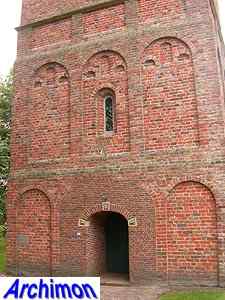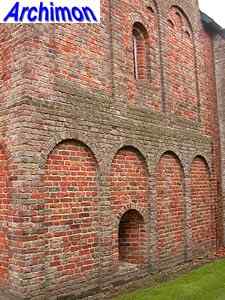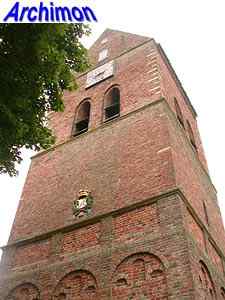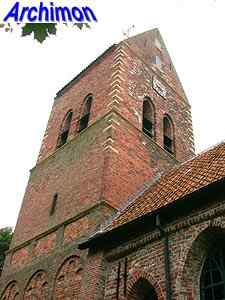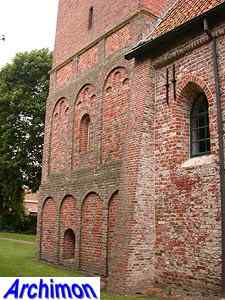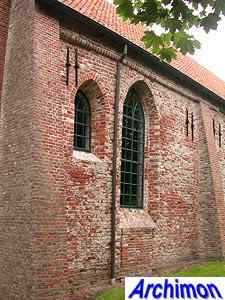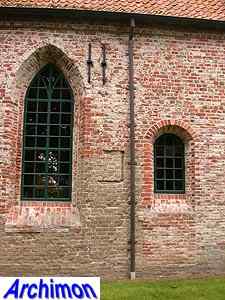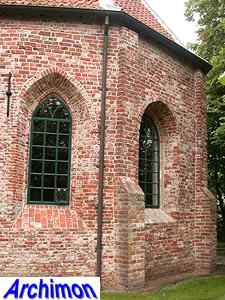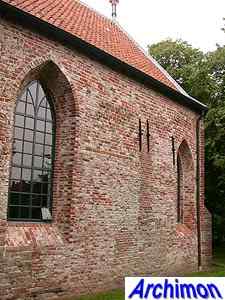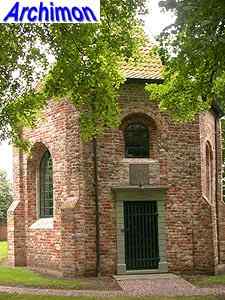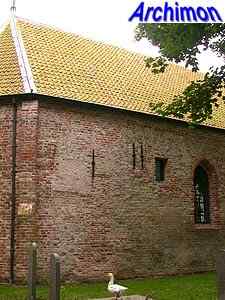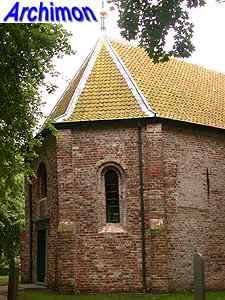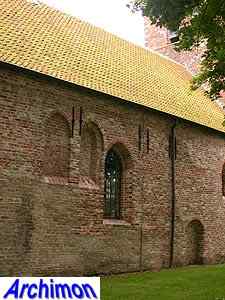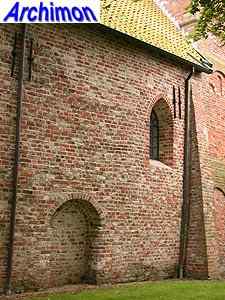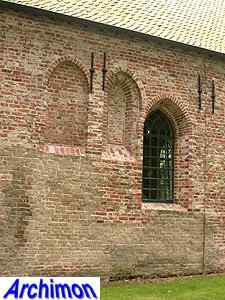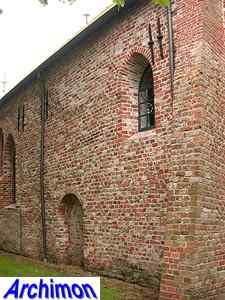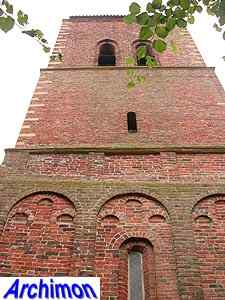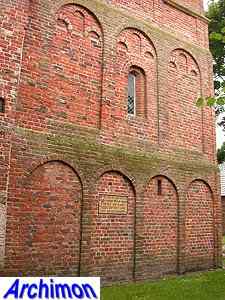
Godlinze (Gr): reformed church part 1/2
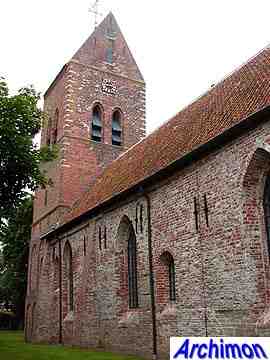
Godlinze grew around an artificial
hill, called a wierde in this
province, on which a church was built. This church was dedicated to
St. Pancratius but was renamed to reformed church after the
Reformation. A first church was probably built in the 11th century, a
small tuff building on the position of the eastern trave of the current
nave, and probably not much longer than. Fragments of tuff wall
indicate that the side-walls of this old church have largely survived
as part of the current ones. In ca. 1150 the old church was extended on
the west side, using a smaller format of tuff stones. The nave was
completed in brick the
first half of the 13th century. In this period the walls were
heightened and mellon-vaults added. The choir was built in the second
half
of that century.
Because the western facade is unusually thin, which suggests that it
was intended to be temporary only, it seems plans were made to
extend the nave even more. By that time the tower stood in the way,
which had been built in the 12th century; its lower part remains and is
ornamented in Romanesque style. The
rest of today's tower dates from a rebuilt which started in 1554. On
top is a saddle-roof, as common
for the northern provinces.
The large Gothic windowin nave and choir were added in the 16th
century, possibly in
1571 when the church was renovated. On the north side several
Romano-gothic traces have been preserved. On several positions the nave
is supported by buttresses, which are not original. Several similar
buttresses were removed during a restoration in 1984-1987, when also
the coat of plaster was removed from the exterior walls.
The interior is dominated by large Romano-gothic mellon-vaults with
paintings from the 13th until the
16th century. The choir is seperated from the nave by a wall which was
added in 1865.
